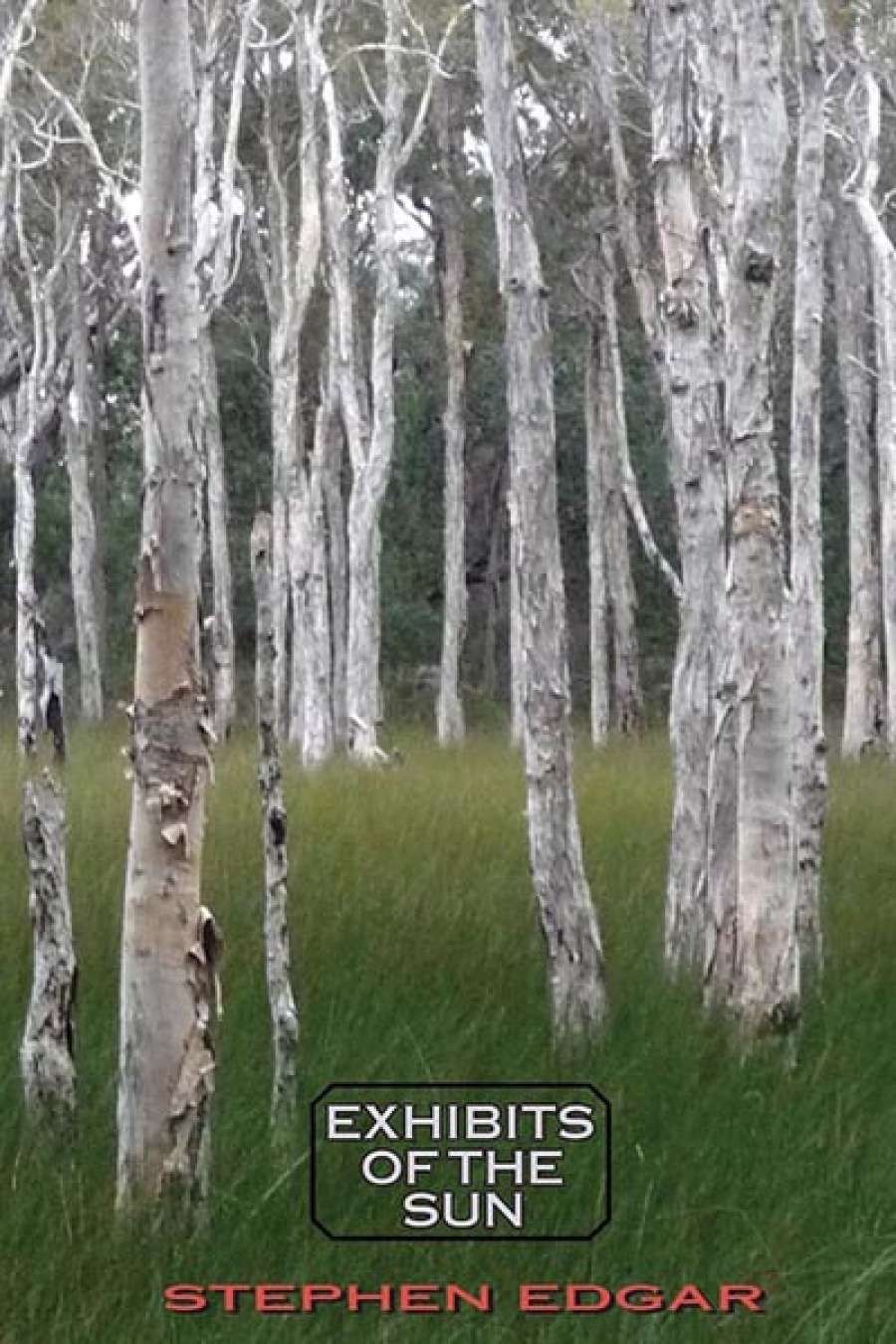
- Free Article: No
- Contents Category: Poetry
- Custom Article Title: Geoffrey Lehmann reviews 'Exhibits of the Sun' by Stephen Edgar
- Review Article: Yes
- Online Only: No
- Custom Highlight Text:
Exhibits of the Sun is Stephen Edgar’s tenth collection of poems. Born in 1951, he is now ripe for a major Collected Poems. With careful pruning of some lesser pieces, such a book will display the full range of his work, which marries virtuosic technique with powerful emotion and intellect.
- Book 1 Title: Exhibits of the Sun
- Book 1 Biblio: Black Pepper, $22.95 pb, 69 pp
Edgar is a master of rhyme. In the poem ‘Sight-Reading’ he rhymes ‘who’, ‘view’, and ‘you’ – all fairly standard rhymes – with ‘autocue’. There is something uncanny and magical about rhyme. It can be seen as a form of coupled oscillation. The inventor of the pendulum clock, Christiaan Huygens, sick in bed, noticed an ‘odd kind of sympathy’ between the pendulums of two of his clocks mounted in the one case. Over time they would start to swing in synchrony in precisely opposite directions, irrespective of how they began. (He wrote about this strange effect in 1665.) Coupled oscillation is used in lasers and superconductors. It also pervades the natural world: for example, in the pacemaker cells that regulate our heartbeats, the synchronised chirping of crickets and flashing of fireflies, and butterfly irises (dietes iroides) which have days when they all flower, and days when none flowers.
As well as having a love affair with formal complexity in verse, Edgar celebrates the formal complexity of the universe. Form merges with theme. In his poem ‘Off the Chart’, he observes a clothes hoist swivelling back and forth:
Around it turns three feet or so,
Its weight of garments too much for the air,
And back again, incessantly – in fact
An action to compare
With the white machine that they were packed
And swirling in not half an hour ago,
As though they were aware
Or held a memory of that loose,
Recurrent motion.
This motion is then relayed to the trees, which also move to and fro, and to an ‘oscillation in the sky’, and to the universe itself, which Edgar sees as swinging out to some enormous limit back and forth. Edgar, in ‘All Eyes’, tells us as a rocket travels into space:
Look, look, it says, and peels away the night
As it flies on. And there
A ghostly Ferris wheel frozen in space
Saturn comes looming at the satellite
With all its shattered rings of icy lace
Exquisitely beyond repair.
So much to see. And now the vast moon, Titan
Fills the compulsive lens.
In the second last verse of this poem, Edgar challenges Blake’s vision of the sunflower ‘weary of time’ with an excited twenty-first-century vision of a universe without apparent limits:
The fossil in the paginated book
Of shale that was once slime
Falls open and cries, Look. And these sunflowers –
Their yellow is the synonym for Look,
Though they’ve no word for weary or the hours
The sun has summoned them to climb.
A highlight of this book is ‘Moonlight Sculptures’. This explores the postures of the poet’s lover in bed on a hot and humid night. In the third stanza:
Now you lie flat, but twisted to the side,
One sheet a failing neckline, and I watch
The contour of your clavicles
Divide
The shadow, and the shade that pools
Between them in the suprasternal notch.
Note this use of the wonderfully exact anatomical name for the hollow above the breast bone, and also how ‘divide’, occupying a line to itself, cleverly divides the first three lines of the stanza from the last two lines. In the fourth stanza, Edgar observes:
Later, and you are offered to the air,
That sheet kicked to your ankles, to display
The image Eve was fashioned in,
And there –
The world’s unspoken origin,
So openly depicted by Courbet.
This is sexy and profound in a way that A.D. Hope often was, but with a tenderness and affection often missing in Hope. The short line, ‘And there –’ skilfully causes the reader to pause before the dénouement of the stanza’s last two lines.
 Stephen Edgar (photograph by Vicki Skarratt)
Stephen Edgar (photograph by Vicki Skarratt)
‘Oswald Spengler Watches the Sunset’ is imbued with a grand seriousness. Edgar contrasts the immobility of a great oak with the freedom of dancing midges. Another fine poem is ‘Saccade’, thoughI had to read the explanation of ‘saccade’ in Wikipedia before I understood it. Edgar is not always easy to read, and some of the lesser pieces are dense and dry, marred by personification – the obverse side of his high seriousness.
Edgar’s poem ‘The Angel of History’ is an extrapolation of a passage from Walter Benjamin, who saw the angel as heroically looking back, yearning to restore the wreckage of the past and irresistibly propelled by a storm into the future, to which the angel’s back was turned. Benjamin concluded dismissively: ‘The storm is what we call progress.’ For much of his poem Edgar pays homage to the Benjamin text, but at the end the angel’s task is described surprisingly as a ‘vice’. Nor is there any dismissive reference to ‘progress’. Edgar’s homage to Benjamin ends as a critique.
In this book, Stephen Edgar, with his almost Whitman-like embrace of the natural world, encourages us to open our eyes to a universe that physicists are starting to realise is becoming more beautiful and complex as it expands, in defiance of the second law of thermo-dynamics.


Comments powered by CComment